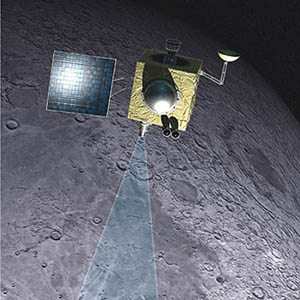Chandrayaan's orbit increased again
 At the Spacecraft Control Centre (SCC) at the ISRO Telemetry Command, Control and Tracking Network (ISTRAC), headed by S. K. Shivakumar at Bangalore, an air of professionalism and calmness flowed. Here, on Sunday morning, the commands were radioed by radio frequency specialists to the engine on board Chandrayaan-1 to fire.
At the Spacecraft Control Centre (SCC) at the ISRO Telemetry Command, Control and Tracking Network (ISTRAC), headed by S. K. Shivakumar at Bangalore, an air of professionalism and calmness flowed. Here, on Sunday morning, the commands were radioed by radio frequency specialists to the engine on board Chandrayaan-1 to fire.
On Sunday, the engine was launched for about nine-and-a-half minutes at 7.08 a. m. "This successful firing lifted the spacecraft's orbit from an apogee of 74,715 km and a perigee of 336 km on Saturday to its present apogee of 1.64 lakh km and a perigee of 348 km. The spacecraft has almost reached half the distance to the moon, which is 3, 84,000 km away from the earth. In this orbit, Chandrayaan-1 takes about 73 hours to go round the earth once," said an ISRO official.
He further added, "At this distance from the earth, the electric transmitter power with which Chandrayaan-1 whispers is so low that the signals received from it are very feeble and they have to be amplified. So it is quite a big challenge to communicate with the spacecraft when it is traveling deep in space."
A very vital role in tracking and communicating with Chandrayaan-1 at a high orbit was being played efficiently by the two antennae with a diameter of 32 meters and 18 meters that belong to the Indian Deep Space Network (IDSN) of ISRO at Byalalu village, near Bangalore. These two antennas, shaped as in a huge bowl, will receive scientific information from the 11 instruments on board Chandrayaan-1, when the spacecraft becomes operational.
The official also said, "If three more firings of the liquid apogee motor on Chandrayaan-1 are successfully accomplished on October 29, November 3 and November 8, the spacecraft will reach its final abode of 100 km around the moon on November 14th or 15th. "
The rest of the 10 scientific instruments on the spacecraft will be switched on, one after the other, following the ejection of the MIP.